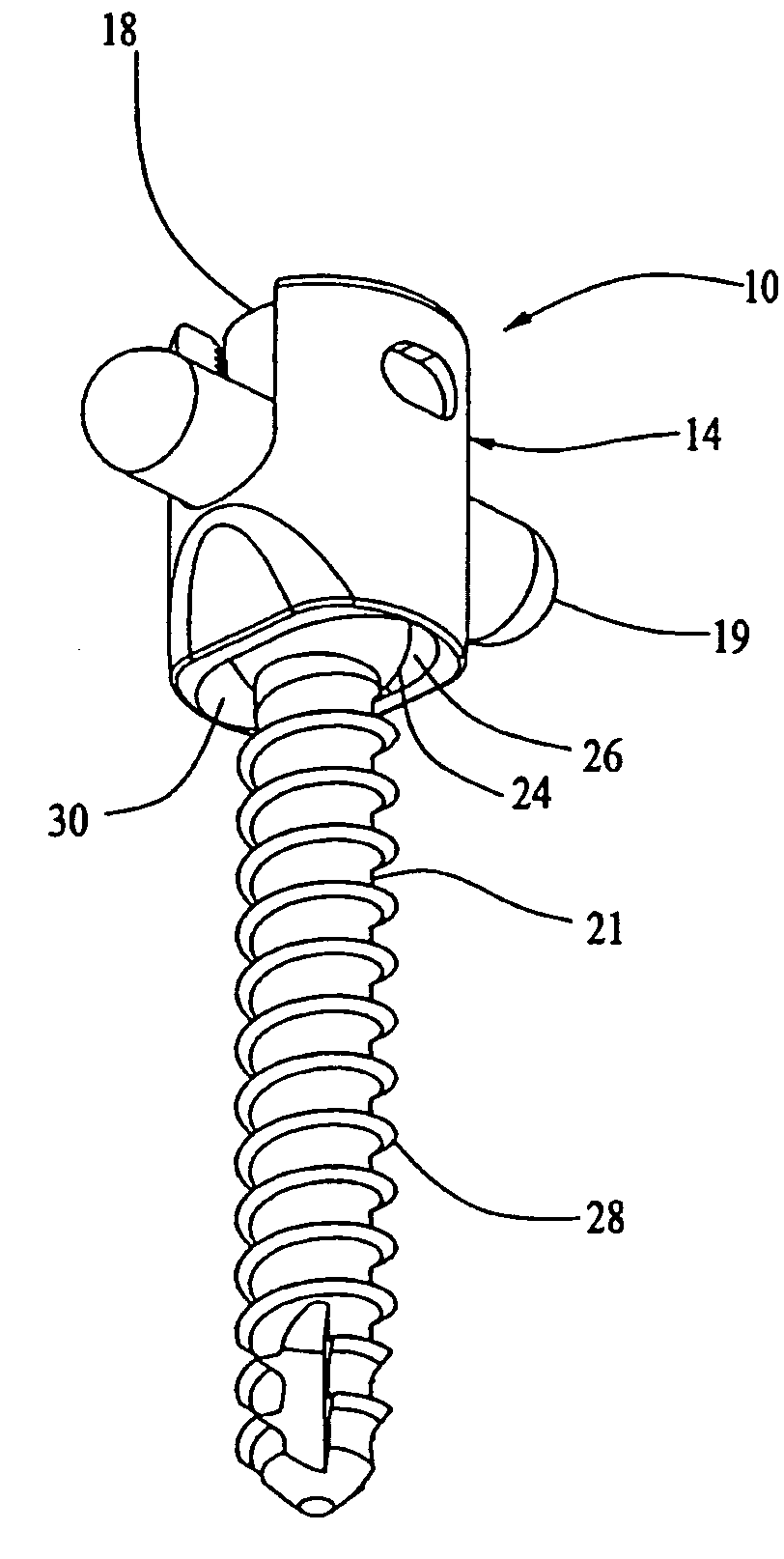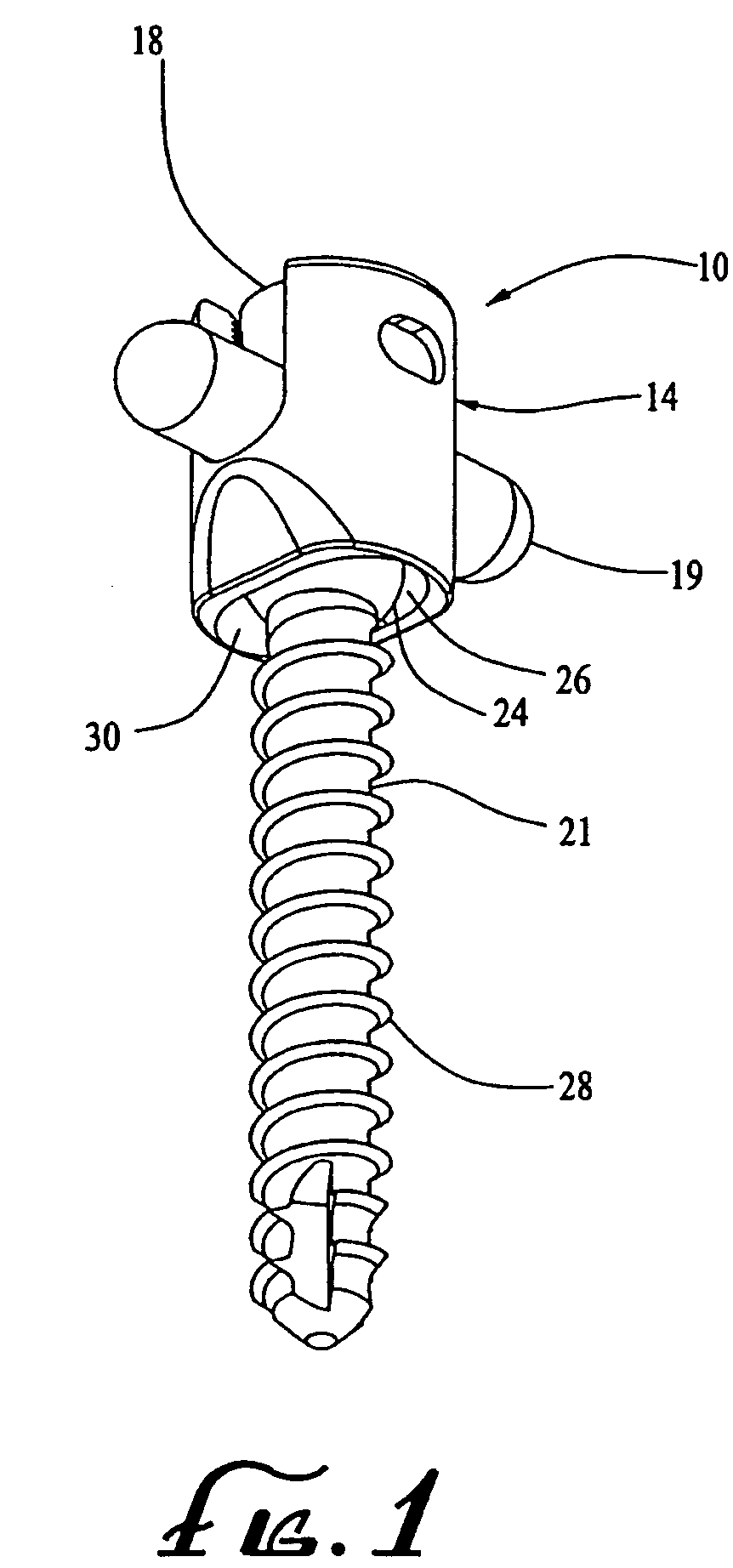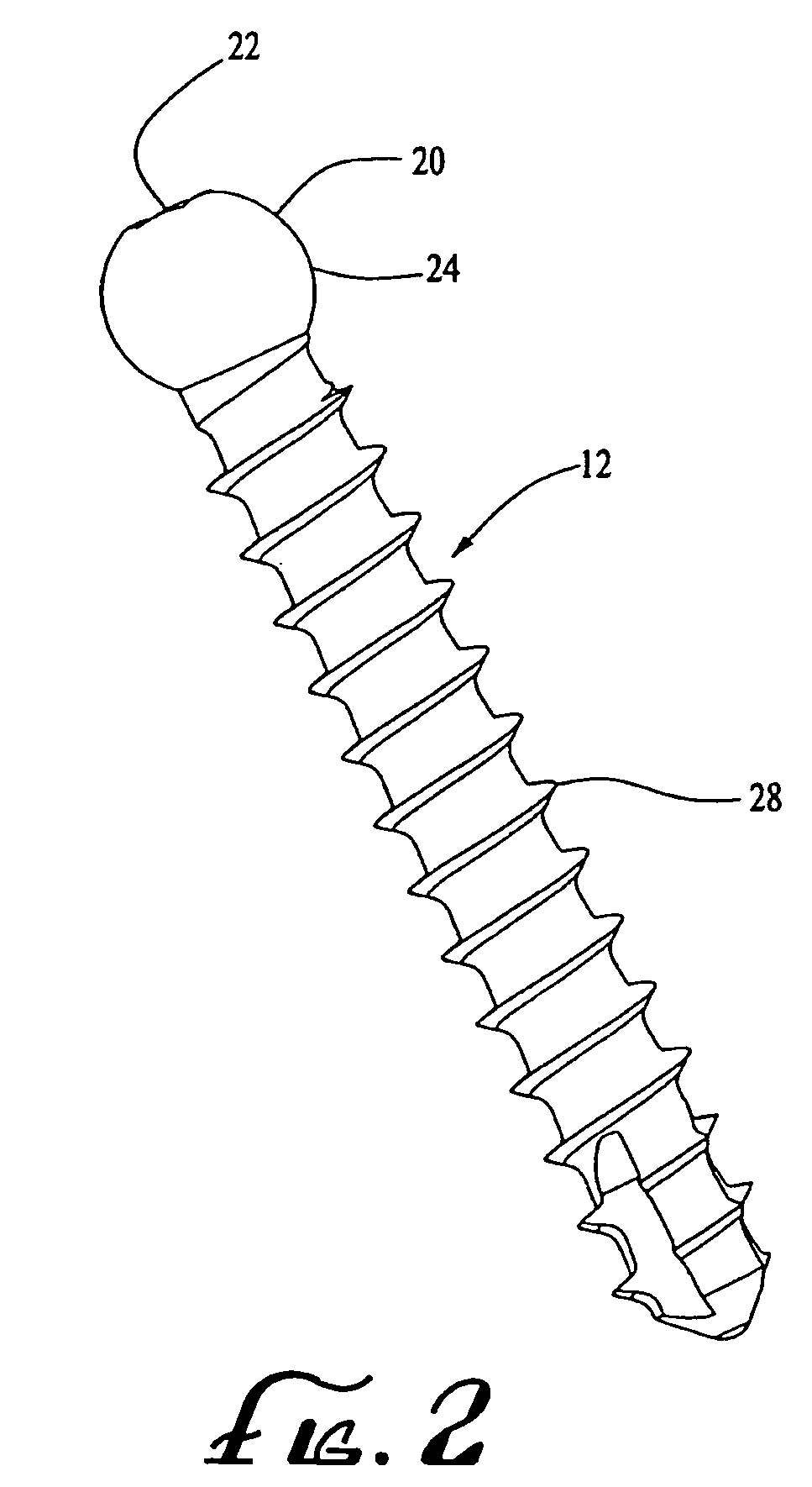Variable angle spinal screw assembly
a screw and variable angle technology, applied in the field of spinal screw assembly, can solve the problems of increasing the chance of cross-threading, torque exerted on the anchor, inadvertently introducing stress points along the rod, bending the rod or even loosening the threaded engagement of the anchor, etc., and achieve the effect of relieving the pressure of the cap
- Summary
- Abstract
- Description
- Claims
- Application Information
AI Technical Summary
Benefits of technology
Problems solved by technology
Method used
Image
Examples
Embodiment Construction
[0029]Referring now in detail to the drawings, the variable angle spinal screw assembly 10 of the present invention comprises a pedicle screw 12, a body member 14, a bushing 16 and a locking cap 18. The assembly 10 is used with at least one other such assembly and a stabilization or fixation rod 19 to connect the assemblies and stabilize the vertebras into which the assemblies are inserted. The pedicle screw 12 preferably employed in assembly 10 has a spherical head 20 defining a slot 22 therein used to drive the screw into the bone. The rounded surface 24 defined by the lower portion of screw head 20 rests upon and mates with a rounded interior surface 26 formed in the inner or lower end of the body member 14 of the assembly 10 so as to form a modified ball joint that provides the desired variable angular movement of the body member with respect to the embedded pedicle screw. The threaded shaft portion 28 of screw 12 extends therefrom through the opening 30 in the lower end of body...
PUM
 Login to View More
Login to View More Abstract
Description
Claims
Application Information
 Login to View More
Login to View More - R&D
- Intellectual Property
- Life Sciences
- Materials
- Tech Scout
- Unparalleled Data Quality
- Higher Quality Content
- 60% Fewer Hallucinations
Browse by: Latest US Patents, China's latest patents, Technical Efficacy Thesaurus, Application Domain, Technology Topic, Popular Technical Reports.
© 2025 PatSnap. All rights reserved.Legal|Privacy policy|Modern Slavery Act Transparency Statement|Sitemap|About US| Contact US: help@patsnap.com



